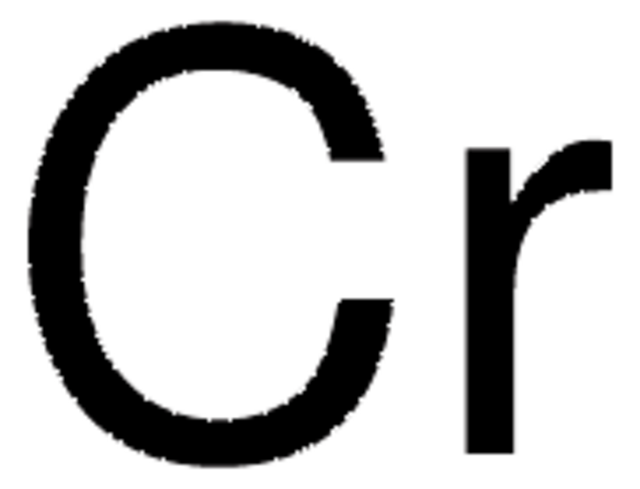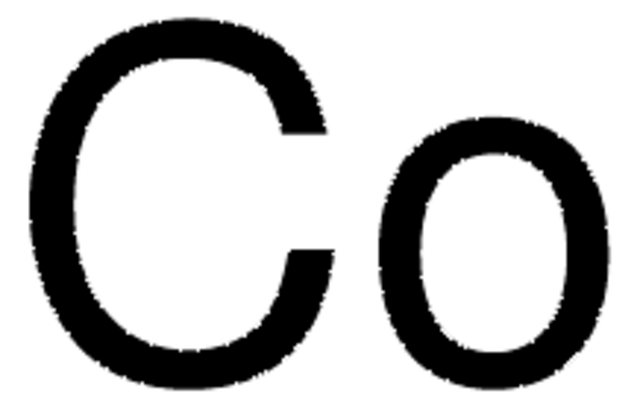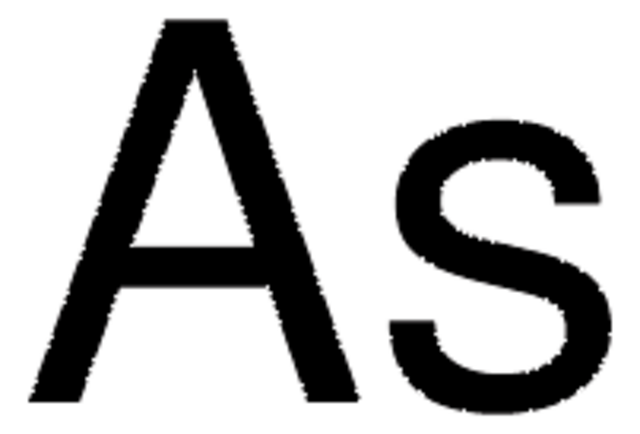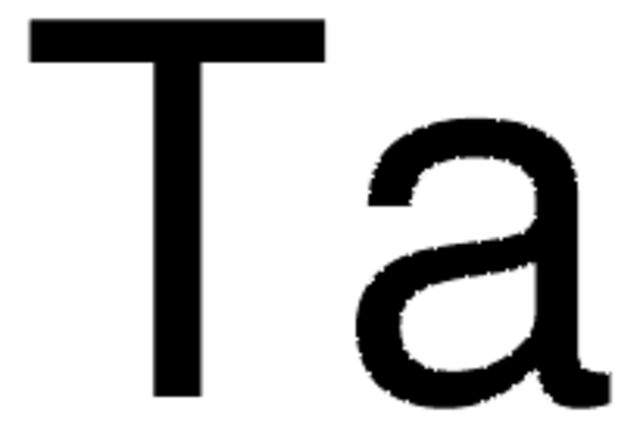374849
Chromium
chips, 99.995% trace metals basis
Sinónimos:
Chromium element
About This Item
Productos recomendados
Quality Level
assay
99.995% trace metals basis
form
chips
resistivity
12.7 μΩ-cm, 20°C
bp
2672 °C (lit.)
mp
1857 °C (lit.)
density
7.14 g/mL at 25 °C (lit.)
SMILES string
[Cr]
InChI
1S/Cr
InChI key
VYZAMTAEIAYCRO-UHFFFAOYSA-N
¿Está buscando productos similares? Visita Guía de comparación de productos
Categorías relacionadas
Storage Class
11 - Combustible Solids
wgk_germany
nwg
flash_point_f
Not applicable
flash_point_c
Not applicable
ppe
Eyeshields, Gloves, type N95 (US)
Elija entre una de las versiones más recientes:
¿Ya tiene este producto?
Encuentre la documentación para los productos que ha comprado recientemente en la Biblioteca de documentos.
Los clientes también vieron
Artículos
The price of tellurium, a key component in many thermoelectric materials, has risen in recent years, leading to the search for more cost-effective substitutes. This article presents silicide materials as a cheaper potential alternative.
In recent years, the price of tellurium, a key component in the bestperforming thermoelectric materials, has increased significantly, leading to the question, “Is it economically viable to produce thermoelectric generators on an industrial scale?
Biomedical implants are essentially foreign substances within the human body that must survive many years’ exposure to demanding mechanical and physiological conditions. Despite these challenges, metal implants have been widely used to substitute for or rebuild hard tissues such as bones and teeth.
The unique properties of the rare-earth elements and their alloys have brought them from relative obscurity to high profile use in common hightech applications.
Global Trade Item Number
| Número de referencia del producto (SKU) | GTIN |
|---|---|
| 374849-250G | 4061831834819 |
| 374849-50G | 4061831834826 |
Nuestro equipo de científicos tiene experiencia en todas las áreas de investigación: Ciencias de la vida, Ciencia de los materiales, Síntesis química, Cromatografía, Analítica y muchas otras.
Póngase en contacto con el Servicio técnico









